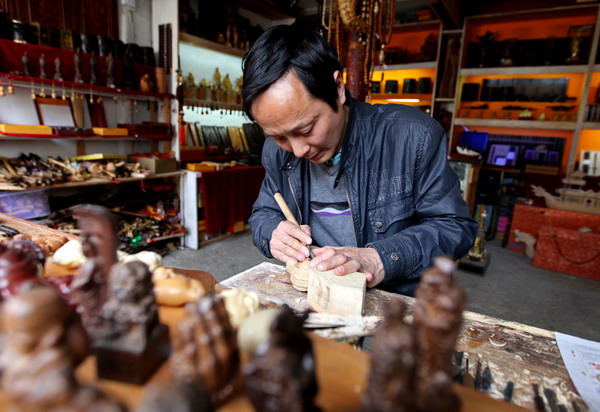Moving to the drum pavilions' beat
|
A folk artist in Qiantong village works on a wood carving in April. Zhang Yongtao / for China Daily |
In 1997, the department of culture in Zhejiang gave the title: "Home of Drum Pavilion" to the village, and Qiantong is the only village in China still practicing the tradition every year.
Besides drum pavilions, mobile stages are also used in the parade. Carried by five to eight people, the stage is about two meters long and one meter wide. Each stage includes three to five children, who dress as characters from ancient Chinese literature and mythology, performing on the top.
Swings are installed on the stages so crowds who can't get close to them can still see the young performers when they swing up. Like the drum pavilions, stages are also followed by 30 to 50 music players. Every year, more than 10,000 visitors flock to the 500-year-old parade.
Free porridge is offered to audiences. It is another practice representing the close ties among local residents, reflecting their willingness to share food and other items.
As a provincial historical site, Qiantong retains all its old architecture. One of the biggest buildings in the village is an ancestral hall, which was built in the early Ming Dynasty. Eighty-percent of the 10,000 local residents have the surname Tong, one of the oldest surnames in China. The first Tong family moved to this area 770 years ago.
A memorial tablet of Tong Huang, who is believed to be the master of the first Tong family, is worshipped in the hall. Although Tong's descendants believe their ancestor picked a land with good feng shui, the village suffered from drought centuries ago. A local resident named Tong Jile led villagers to build a dam and directed water from a river nearby to Qiantong.















